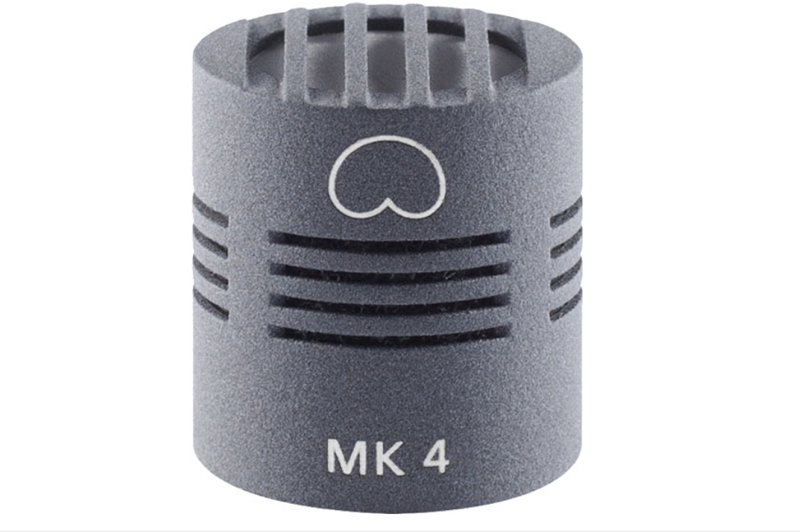- No products in the cart.
Schoeps MK 4 Cardioid Microphone Capsule
1,794.00 USD
Schoeps MK 4 Cardioid Microphone Capsule — Classic unidirectional pattern for universal use.
SKU: SCHMK4
Categories: Microphones & Accessories, MK Capsules, Schoeps, Shotgun & Condenser
Tag: Schoeps
Description
Schoeps MK 4 Cardioid Microphone Capsule
- Cardioid pattern
- The best-selling Schoeps capsule
- Directivity is highly independent of frequency
- Universally applicable; preferred use as spot microphone, for acoustic instruments, and in conference recording
- Often used in the main microphone pair for XY, ORTF and MS stereo recordings
The MK 4 has been a reference microphone for years in a wide variety of recording situations.
Due to its transparent sound character and excellent attenuation of rear-incident sound, it reproduces sound sources very naturally. This has given the MK 4 a reputation as a universal “problem solver” even in difficult recording situations.
Its flat frequency response, and the constancy of its directional pattern for all frequencies, are the basis of the MK4’s sound quality. Even in the diffuse sound field its frequency response is flat, with a slight increase at 10 kHz compensating for high-frequency losses in the room.
Thus the sound image is transparent for direct-arriving sound, for sound arriving from the side, and for diffuse sound in the room (reverberation).
The MK 4 is a classic small-diaphragm microphone with all the advantages of this microphone type. Its frequency response and the consistency of its polar diagram from low to high frequencies are exemplary.
Like all SCHOEPS capsules, the MK 4 achieves its flat frequency response solely by its mechanical architecture, without any electronic filtering.
As a pressure gradient transducer, the MK 4 has a single diaphragm that is exposed to the sound from both the front and rear. The side sound inlets must therefore never be covered.
The “reach” (distance factor) of a classic cardioid such as the MK 4 is about 1.7 times that of an omnidirectional microphone. Thus even at greater distances from the sound source, direct sound can be obtained. The advantages of the MK 4 are shown especially when mixing several microphone signals – pickup of sound from the side is reduced in level but not subject to coloration.
At 90° the attenuation of the MK 4 is 6 dB, and at 180°, some 20 to 30 dB. Diffuse-incident sound is picked up 4.8 dB lower in level than front-arriving sound.
Practice
The MK 4 is often preferred by opera singers and other trained vocalists. But its natural, transparent character also suits it very well for use in pop and rock applications, on stage or in the studio, where equalization is a part of the plan. A microphone with a clear, neutral sound quality provides the ideal point of departure whenever special “coloring” is needed.
Specifications
| Pickup pattern | Cardioid |
| Frequency range |
|
| Sensitivity | -36.5 dB (V/Pa), 15 mV/Pa with CMC 6 |
| Equivalent noise level (A-weighted) | 14 dB with CMC 6 |
| Equivalent noise level (CCIR) | 24 dB with CMC 6 |
| Signal-to-noise ratio (A-weighted) | 80 dB with CMC 6 |
| Maximum sound pressure level (THD < 0.5 %) | 131 dB-SPL with CMC 6 |
| Length | 22 mm |
| Diameter | 20 mm |
| Weight | 17 g |
Product Categories
- Bargain Bin
- Books
- Boom Poles
- Bundles
- Cables & Adapters
- Camera Interfaces
- Cases, Bags & Harnesses
- Clearance
- Communications
- Connectors
- Expendables
- Featured
- Headphones
- Holiday Clearance
- In-Ear-Monitors
- Interfaces
- Microphones & Accessories
- Mixers
- Motorola
- NAGRA
- New Product
- Podcast
- Power Solutions
- PPE
- Press Boxes
- Pro Audio Converters
- Pro Video
- Recorders
- Slates & Timecode
- Sound Carts
- Trew Merchandise
- Used
- Walkie-Talkies
- Wireless


 US
US  Canada
Canada 





